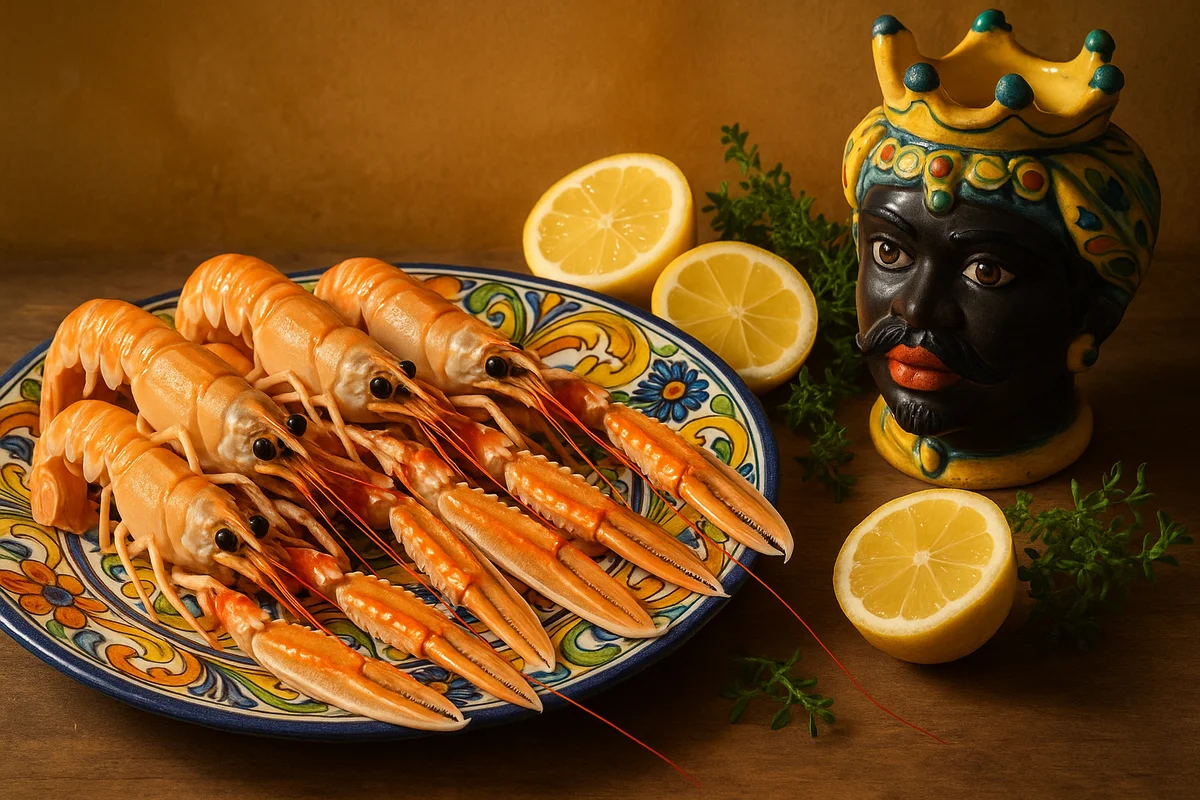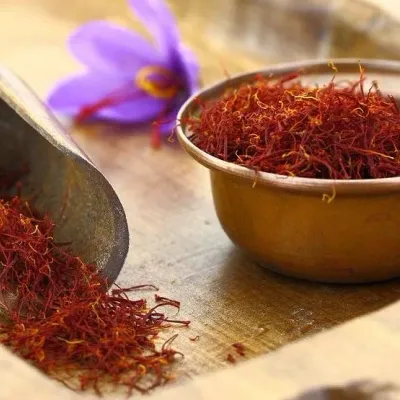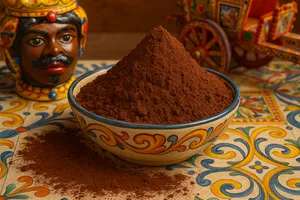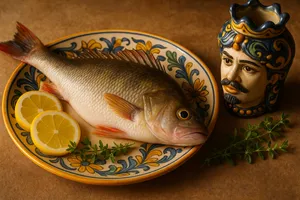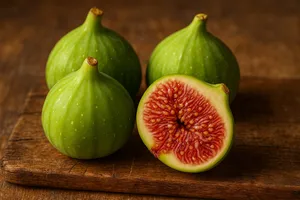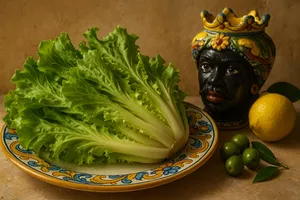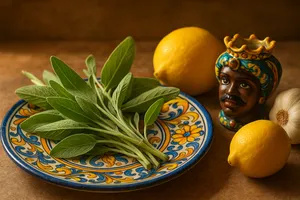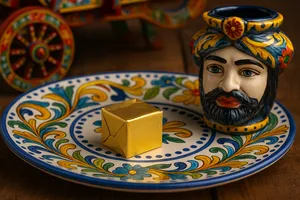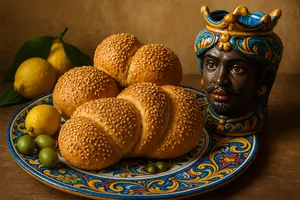Overview
Langoustines are decapod crustaceans belonging to the species Nephrops norvegicus, characterised by an elongated body of pale orange-pink, long slender claws, large prominent eyes, and a size ranging from 10 to 25 cm. They inhabit muddy seabeds of the Mediterranean at considerable depths (100–500 metres) and are considered among the most prized crustaceans for their sweet, delicate, compact flesh with a refined flavour. In Sicilian cuisine, langoustines are a luxury ingredient, reserved for special preparations, celebrations and important meals. They are usually cooked simply to enhance the quality of their flesh: grilled, baked, boiled, in soups, or in more elaborate dishes where they play a starring role.
Fishing for langoustines in Sicilian waters is carried out with deep trawl nets, an activity requiring equipped vessels and knowledge of the seabed. Freshly caught langoustines have firm flesh, a delicate marine flavour and the scent of clean sea. They are considered finer than prawns for their sweetness and firmer texture, even though they are less abundant and therefore more expensive. The distinction between langoustines and prawns is important: true langoustines (Nephrops) have long claws and live on muddy seabeds, while prawns (various species of Penaeus and others) have short claws and inhabit different environments. Every Sicilian who loves the sea holds memories linked to langoustines: the beauty of their bright orange colour, the sweetness of their flesh, the pleasure of shelling them patiently to savour every bite. Langoustines symbolise celebration, the bounty of the sea and culinary refinement.
Characteristics
Langoustines (also called “Norwegian lobster” or “Norway lobster”) have an elongated cylindrical body, a smooth carapace of pale orange-pink, very long slender dentate front claws (their distinguishing feature), and five pairs of legs. Their large, kidney-shaped, black, very prominent eyes are an adaptation to life in deep waters with little light. Common sizes range from 12 to 18 cm in total length, with larger specimens reaching 25 cm.
The edible flesh lies in the tail (abdomen) and claws. The meat is white, compact, firm yet delicate, sweet, and with a refined marine flavour less intense than that of other crustaceans. Its texture is less elastic than prawns, softer and finer. The aroma should be delicately marine, never ammoniacal.
Fresh, live langoustines have a bright colour, lively movements and shiny black eyes. Dead or older specimens have a dull colour, flaccid bodies and an unpleasant smell. Freshness is fundamental to quality.
Langoustines vs prawns vs king prawns
These crustaceans are often confused but have important differences:
Langoustines (Nephrops norvegicus): Long slender claws, pale orange-pink colour, large eyes, inhabit deep muddy seabeds. Sweet, highly prized flesh. Medium size.
Prawns (Parapenaeus longirostris and other species): Short claws, pink-red colour, variable size, live on different seabeds. Flavourful flesh, less prized than langoustines. More abundant and less expensive.
King prawns (Penaeus kerathurus and other species): Large size (20–30 cm), short claws, grey-green when raw (turn pink-red when cooked), characteristic stripes. Firm, flavourful, prized flesh. Inhabit sandy seabeds.
Red prawns (Aristaeomorpha foliacea, Aristeus antennatus): Bright intense red colour, medium-large size, deep-water habitat. Exceptionally prized, sweet flesh. They are the most expensive among prawns.
In Sicily all these crustaceans are fished and appreciated, but langoustines retain a reputation for exceptional refinement.
Fishing and seasonality
Langoustines live on muddy seabeds at depths of 100–500 metres, in burrows they dig in the mud. They are mainly active at night when they emerge to feed. They are caught using deep trawl nets (a method that raises environmental concerns due to its impact on the seabed).
In Sicily, langoustine fishing is practised mainly along the southern and eastern coasts where the seabeds are suitable. Availability in markets depends on local catches, which vary according to seasons and sea conditions.
Langoustines are available all year round, but the best periods are spring and autumn. They may be scarcer in summer. Freshness depends on how quickly they are taken from sea to consumer.
Cleaning and preparation
Langoustines may be cooked whole or cleaned:
For cooking whole (grill, oven):
1. Rinse the langoustines under cold water.
2. Optionally cut the carapace along the back with scissors to ease opening after cooking.
3. Cook whole.
To extract raw flesh:
1. Detach the head from the body (the head contains little that is edible).
2. Remove the claws and crack them gently to extract the flesh.
3. Shell the tail: gently press the sides of the carapace and pull out the flesh, or cut the ventral shell with scissors and slide out the meat.
4. Remove the dark intestine (the thread running along the back) by making a shallow incision and pulling it out.
Cleaning requires delicacy to avoid breaking the flesh. The heads can be used to prepare fish broths and stocks (they are very flavourful).
Use in Sicilian cuisine
Grilled langoustines
The most classic and appreciated preparation. Whole langoustines (or halved lengthwise) are grilled over embers or on a griddle, seasoned with olive oil, garlic, parsley and lemon. The quick cooking preserves their sweetness and tenderness. They are served hot, to be shelled at the table.
Baked langoustines
Langoustines arranged in a baking dish, seasoned with oil, garlic, parsley, breadcrumbs and white wine, and cooked in the oven. The moderate heat keeps the flesh moist and flavourful.
Boiled langoustines
Langoustines cooked in salted boiling water (or fish stock) for a few minutes, served cold with mayonnaise, cocktail sauce, or simply oil and lemon. A preparation that enhances their natural sweetness.
Pasta with langoustines
The flesh of langoustines dresses pasta (spaghetti, linguine, paccheri) with fresh cherry tomatoes, garlic, oil, parsley and white wine. The sauce should remain light to avoid overpowering their delicate flavour.
Langoustine risotto
Creamy risotto enriched with langoustine flesh and stock prepared with the heads. A refined preparation requiring skill.
Fish soup with langoustines
Langoustines enrich fish soups, broths and Sicilian-style fish stews. They lend sweetness and elegance to the dish.
Raw langoustines
In contemporary cuisine, extremely fresh langoustines are served raw (carpaccio, tartare) seasoned with olive oil, lemon, salt and pepper. This requires absolute freshness and excellent quality.
Fried langoustines
Less common but delicious: shelled langoustines, floured or battered and fried. Crisp outside, tender within.
Perfect cooking of langoustines
Langoustines require brief cooking to avoid becoming rubbery:
Boiling: 2–3 minutes in salted boiling water (depending on size). When they float and turn bright pink, they are cooked.
Grill: 3–4 minutes per side over medium-high heat. The carapace should brown slightly.
Oven: 8–10 minutes at 200°C with seasonings.
Pan: 2–3 minutes per side in hot oil with aromatics.
Perfectly cooked flesh is opaque, white, firm yet tender. If it becomes rubbery, it has been cooked too long.
Storage
Live langoustines keep for only a few hours out of water, in a cool place covered with a damp cloth. They should never be kept in fresh water (they die) nor in airtight containers.
Dead raw langoustines can be stored in the refrigerator, in the coldest part, on ice for up to 1–2 days. They must be consumed very fresh.
Cooked langoustines keep in the refrigerator for 1–2 days, covered.
Langoustines can be frozen: raw, cleaned or whole, in airtight or vacuum-sealed bags, they keep for 2–3 months. Thaw slowly in the refrigerator and cook immediately. Freezing slightly reduces quality but is acceptable.
Buying tips
Choose live, lively langoustines with bright colour. If already dead, check freshness: bright orange-pink colour, shiny black eyes, firm body, delicate marine smell. Avoid langoustines with ammoniacal odour, flaccid bodies, dark spots, dull eyes.
Whole langoustines weigh around 30–50 g each. For a main course, allow 4–6 langoustines per person (depending on size and preparation).
In Sicily, fresh langoustines are found in coastal fish markets. Prices are high (30–50 euros/kg or more) due to quality and relative scarcity. Check that they are locally caught whenever possible.
Distinguish true langoustines from “scampi” (a name sometimes misused commercially for prawns): true langoustines have characteristic long claws.
Nutritional properties
Langoustines are lean and protein-rich: 100 g of flesh provide about 70–90 calories. They contain 16–18 g of high-quality protein, 1–2 g of fat and no carbohydrates. They are rich in B vitamins (especially B12), vitamin E, and minerals such as selenium, phosphorus, potassium, zinc and iodine.
They are easily digestible, suitable for low-calorie diets. Their proteins contain all essential amino acids. Selenium has antioxidant properties.
Like all crustaceans, they contain cholesterol (about 150 mg per 100 g), so should be eaten in moderation by those with high cholesterol. However, their saturated fat content is low.
Langoustines are considered an aphrodisiac food in popular tradition, likely due to their richness in zinc and their status as a delicacy.
Langoustines in Sicilian tradition
Langoustines have always held a special place in Sicilian gastronomic culture as a prized ingredient. They were (and are) not everyday food but reserved for special occasions: festive meals, celebrations, important guests.
In fishermen’s families, langoustines caught were often sold due to their high economic value, or kept for particular moments. Cooking them was (and is) a gesture of abundance and hospitality.
In Sicilian restaurants, langoustines have always been a symbol of quality and refinement. Dishes featuring langoustines on the menu signalled (and still signal) an upmarket establishment.
Curiosities
The scientific name Nephrops norvegicus means “kidney-shaped Norwegian crustacean” (a reference to the shape of the eyes). The common name “langoustine” likely derives from Greek “kampe” (curve), referencing the curved shape of the body.
Langoustines are nocturnal: during the day they remain hidden in burrows dug in the mud, and at night they emerge to feed. This behaviour makes fishing more effective at certain times.
Langoustines can live up to 10–15 years in the wild, reaching considerable sizes. Those caught are generally younger (2–5 years).
In some parts of Italy, the term “scampi” is used generically for various crustaceans similar to prawns, leading to confusion. True scampi are only Nephrops norvegicus with their characteristic claws.
The heads of langoustines, often discarded, are actually valuable for preparing fish stocks and broths: they contain intense flavour and substances that enrich preparations.
An old seafaring saying goes: “Langoustines in March, sweet as sugar” (a local variant), referring to the spring period when langoustines are particularly fine.
Langoustines are sensitive to light: their large eyes are adapted to life in deep waters where sunlight does not reach. When caught and brought to the surface, bright light can stress them.

